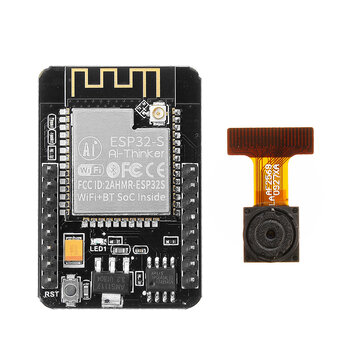computerFont
A simple machine-readable and human-readable font.
WTF?
Why?
This font ("KillAllHumans" made on FontStruct) is a font designed to be both human readable, and easily machine readable.
Getting a machine to read printed information (on paper, in a book or on a sign) is normally done using QR codes (which are not human readable) or with slow, complex, unreliable and computationally expensive software. Your phone probably has an OCR (Optical Character Recognition) function, but your phone is expensive and the camera is very high resolution. Many apps which do this rely on a network connection back to an OCR server. And you probably have to get fairly close to the sign.
This font is readable to a human, and should be machine readable even with a mediocre camera, processor and limited memory such as the ESP-32 with the camera attachment.
It could be used to provide signposting to assist robotic navigation, or just to label containers in a warehouse for easy identification and location.
Characteristics
Broadly the font is actually a subset of a computer-only font with over 1024 characters, which is not rotatable or reflectable.
- All characters are 3x4 pixels with a single pixel separating from other characters.
- No distinction between upper and lower case.
- All letters are distinct.
- All digits are distinct.
- Not all ASCII characters are available.
- All quotes (single, double etc) are displayed as the same character.
- Generally, in each character, pixels always populate the top and bottom rows, and the left and right columns (exceptions are minus and vertical bar).
- Generally, pixels populate every row and every column of the 3x4 space (exceptions are equals, minus, vertical-bar, double-quote).
- Generally, characters are distinct where possible (exceptions are (zero, alpha), (two, zulu) (five, sierra), (six, beta) (nine, quebec)).
- Generally, 180-degree rotation characters do not match other characters (exceptions are mike, whisky).
- Generally, vertically reflected characters do not match other characters (exceptions are (bravo, delta), (echo, atSign), (sierra, zulu), (lima, romeo) and all brackets).
- Generally, horizontally reflected characters do not match other characters (exceptions are (bravo, delta), (papa, quebec), (sierra, zulu)).
Software
The approach to writing the software:
... you get the idea. None of this is computationally expensive, and should be easily doable on an ESP-32 or similar.
A slightly more sophisticated algorithm would do a simple affine transform and hence work even when the image was taken at a funny angle to the sign.
Effectively this would require a 2-D search space for the second step. use
byte getAffineImagePixel(i,j) { getImagePixel(i, j * x + y); }
and search on reasonable values of (x, y). Easy!
The future
Actually write the code to demonstrate this.
Leave a comment
Think I might have solved your problem? Ninety-nine problems, but your robot ain't one? Say so ..


